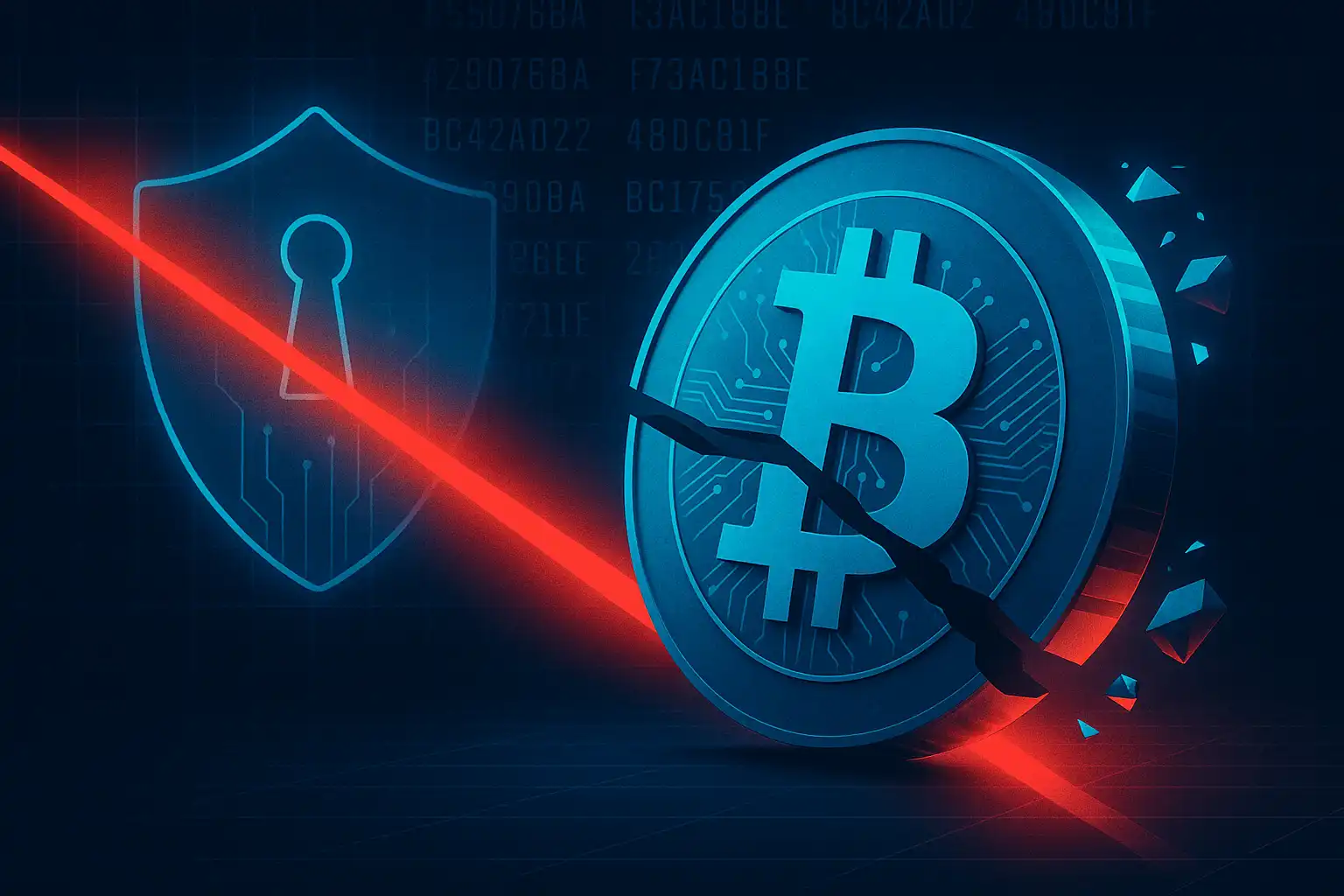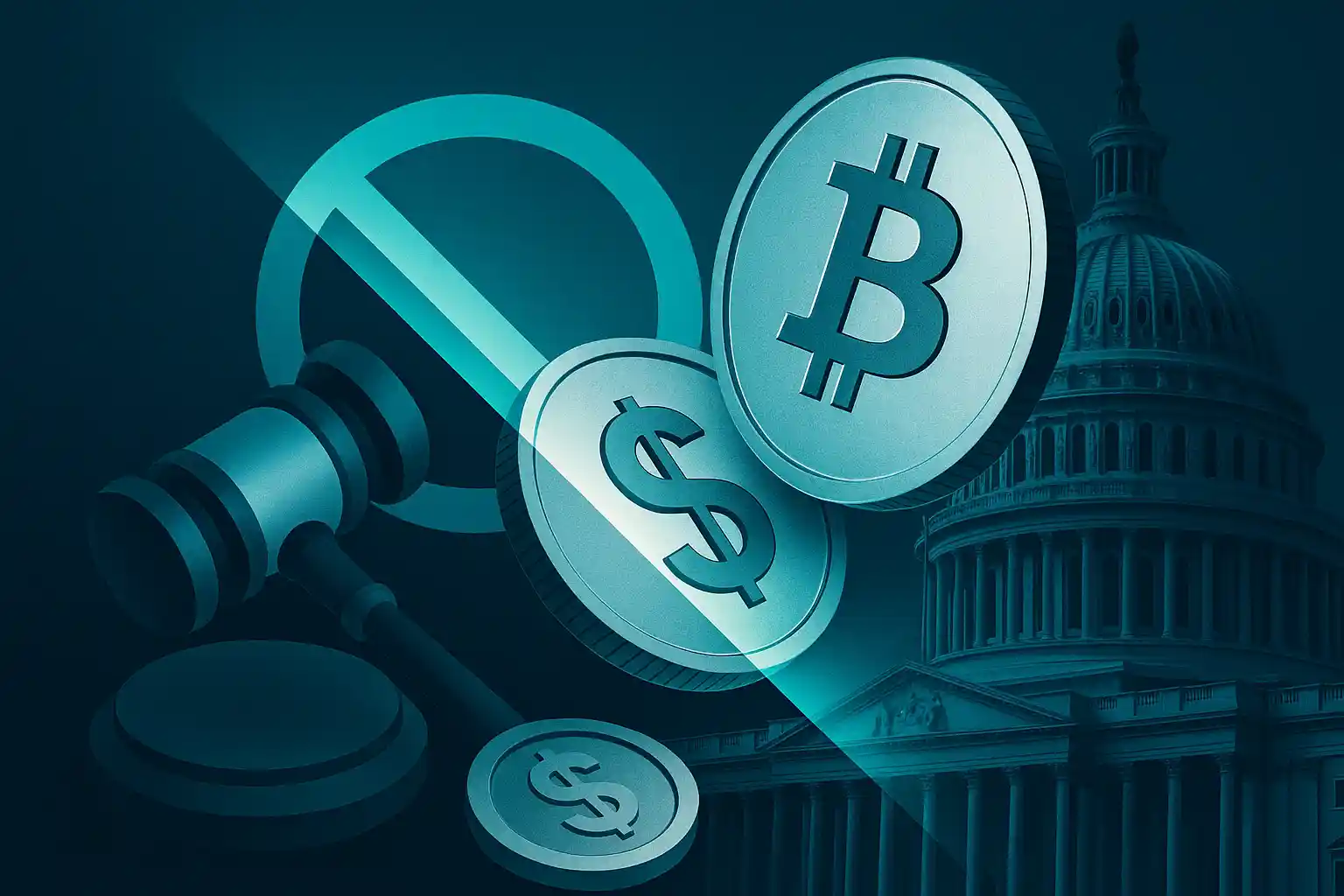
In Brief
Garden Finance suffered multi-chain exploit resulting in over $10.8 million losses just days after ZachXBT accused platform of facilitating money laundering.
Initial reports indicated $5.8 million stolen before revisions increased figure to $10.8+ million, with “all freezable assets quickly swapped” according to investigators.
Platform reportedly derived over 25% of traffic from illicit sources including DPRK-based criminals, raising questions about security practices and oversight.
Garden offered 10% white-hat bounty to exploiter while claiming “assets taken from us” rather than user funds, though full scope remains unclear.
Incident mirrors THORChain pattern where platform accused of laundering for North Korean hackers subsequently suffered $1.3 million theft from founder.
Garden Finance lost over $10.8 million in a multi-chain hacking incident that occurred just days after prominent blockchain investigator ZachXBT publicly accused the platform of facilitating money laundering operations. The timing creates an ironic scenario where a protocol allegedly enabling illicit fund movement itself became victim of exploitation, raising questions about security practices, due diligence failures, and whether platforms tolerating criminal activity face heightened vulnerability to attacks.
The exploit’s technical details remain murky, with conflicting reports about total losses and affected blockchains, though Garden confirmed multiple chains were compromised while offering a 10% bounty to the exploiter in hopes of recovering funds.
Rapid Escalation From $5.8M to $10.8M+ Reported Losses
ZachXBT initially reported the Garden Finance exploit at approximately $5.8 million before substantially revising the figure upward to over $10.8 million—nearly double the original estimate. This revision suggests either incomplete initial assessment of the attack’s scope or ongoing exploitation as investigators worked to quantify losses.
The blockchain sleuth noted through Telegram that
“Garden Finance was likely exploited for $10.8M+ on multiple chains. An address related to the team sent a message onchain to the alleged exploiter offering a 10% whitehat bounty. A few days ago, I pointed out…how Garden Finance was ignoring victims.”
The edited message added the critical detail that “all freezable assets were quickly swapped,” indicating the exploiter moved rapidly to convert stolen funds into assets that cannot be frozen through protocol-level mechanisms or centralized exchange interventions. This conversion suggests sophisticated understanding of crypto forensics and asset recovery procedures—behavior consistent with experienced attackers rather than opportunistic exploiters.
The uncertainty surrounding exact losses reflects ongoing challenges in quantifying multi-chain exploits where assets may be distributed across numerous addresses, chains, and protocols. The “$10.8M+” designation with a plus sign suggests this figure represents a floor rather than ceiling, with potential for additional losses to emerge as investigation continues.
Garden’s Ambiguous Damage Assessment
Garden Finance confirmed suffering a multi-chain compromise but provided limited specifics about the attack’s scope or mechanics. The platform mentioned Arbitrum directly while suggesting other blockchains were affected without naming them—an ambiguity that may reflect incomplete understanding of the exploit or strategic communication decisions about disclosure timing.
Notably, Garden’s statement claimed “assets have been taken from us” rather than explicitly stating user funds were compromised. This phrasing could indicate protocol-owned liquidity or treasury funds were primary targets, potentially limiting direct user losses. However, the distinction between protocol assets and user deposits often blurs in DeFi platforms where both serve operational functions.
The lack of technical detail about the exploit mechanism—whether it involved smart contract vulnerabilities, compromised private keys, oracle manipulation, or other attack vectors—leaves the crypto community unable to assess whether similar protocols face comparable risks or if this represented a Garden-specific vulnerability.
Money Laundering Accusations Preceded Exploit by Days
The hack occurred against a backdrop of serious allegations about Garden Finance’s role in facilitating illicit fund transfers. Earlier this week, the platform announced bridging over $2 billion in tokens—a milestone that attracted scrutiny rather than celebration when investigators examined the transaction sources.
ZachXBT claimed over 25% of Garden’s traffic originated from illicit sources, an extraordinarily high proportion that would indicate either complete absence of screening mechanisms or deliberate tolerance of criminal activity. For context, legitimate financial services providers typically maintain illicit transaction rates well below 1% through KYC procedures, transaction monitoring, and compliance programs.
Fellow investigator Tayvano specifically alleged that DPRK-based criminals—likely referencing North Korea’s state-sponsored hacking operations including the notorious Lazarus Group—were using Garden “en masse” for fund transfers. North Korean cybercriminals have stolen billions from crypto platforms and protocols, making them particularly concerning actors whose presence on a platform signals severe security and compliance failures.
The juxtaposition of these accusations with the subsequent exploit creates several uncomfortable questions. Did Garden’s alleged tolerance of criminal activity attract attention from sophisticated attackers who identified the platform as a target? Did security practices lax enough to ignore illicit user traffic also overlook vulnerabilities that enabled the exploit? Or does the timing represent coincidence rather than causation?
Historical Parallel: THORChain’s Similar Experience
Garden Finance’s situation mirrors an earlier incident involving THORChain, where a platform accused of facilitating money laundering for state-sponsored hackers subsequently suffered theft targeting its leadership. THORChain faced multiple accusations of enabling fund laundering for various hacking groups, including North Korea’s Lazarus Group, which has stolen billions through crypto platform exploits.
Several months after these allegations surfaced, North Korean hackers allegedly stole $1.3 million from THORChain’s founder—a brazen attack that demonstrated either retaliation, opportunism, or simply that criminals comfortable using a platform for laundering might also view it as an attractive target for exploitation.
The pattern suggests platforms tolerating criminal activity may face elevated risk from multiple angles. First, criminal users likely possess technical sophistication exceeding average users, making them better equipped to identify and exploit vulnerabilities. Second, platforms building reputations as laundering-friendly destinations may attract additional criminal attention across various threat vectors. Third, the security and compliance practices that allow high illicit activity rates may correlate with other operational weaknesses that create exploit vulnerabilities.
Why Criminal-Tolerant Platforms Face Heightened Risk
Several mechanisms could explain why platforms with high illicit activity rates might experience more frequent or severe security incidents. Criminal users often probe platforms aggressively, testing boundaries and identifying weaknesses as part of their operational security. This testing may uncover vulnerabilities that the criminals then exploit directly or sell to other attackers.
Platforms prioritizing growth over compliance might allocate insufficient resources to security infrastructure, viewing it as impediment to rapid scaling rather than essential protection. This deprioritization could manifest as unaudited smart contracts, insufficient access controls, or inadequate monitoring systems that legitimate platforms consider baseline requirements.
The reputation effects matter as well. Once a platform becomes known as laundering-friendly, it attracts a user base skewed toward sophisticated criminals rather than retail users. This concentration of high-risk users means any vulnerability likely gets discovered and exploited faster than on platforms with primarily legitimate traffic.
Additionally, platforms facilitating money laundering may face reduced cooperation from law enforcement and crypto exchanges when seeking asset recovery after exploits. If a platform ignored requests to freeze stolen funds flowing through its protocol, exchanges and law enforcement may prove less enthusiastic about assisting when that same platform becomes victimized.
White Hat Bounty Faces Long Odds
Garden Finance offered a 10% white-hat bounty to the exploiter—a standard approach where protocols promise to treat exploiters as security researchers rather than criminals if they return funds and accept a reward for identifying vulnerabilities. In this case, 10% of $10.8 million represents approximately $1.08 million bounty for fund return.
However, several factors suggest this bounty faces low probability of acceptance. First, the exploiter rapidly converted all freezable assets, demonstrating intent to keep stolen funds rather than negotiate. White-hat researchers typically maintain stolen assets in original form or explicitly communicate intentions immediately, while this exploiter prioritized making funds unrecoverable.
Second, if the exploiter has any connection to the criminal networks allegedly using Garden for laundering, the bounty offer holds minimal appeal. Sophisticated criminal operations don’t typically return stolen funds for bounties—they successfully launder and utilize those funds while evading consequences.
Third, the bounty represents only 10% of the haul, meaning the exploiter would sacrifice $9.72 million in exchange for legal immunity that may prove illusory. Many jurisdictions don’t recognize “white-hat” defenses for unauthorized access and theft, regardless of whether funds are ultimately returned.
The bounty offer serves more as public relations gesture demonstrating Garden attempted recovery than as realistic path to fund return. It signals to users and investors that the protocol is taking action while creating paper trail for potential future legal proceedings.
Technical Details Remain Conspicuously Absent
The lack of technical disclosure about the exploit mechanism represents either incomplete understanding by the Garden team or strategic decision to withhold information. Neither possibility inspires confidence about the platform’s security posture or transparency practices.
If the team lacks clarity about how the exploit occurred, it suggests insufficient monitoring, logging, and incident response capabilities—deficiencies that would indicate broader security failures beyond whatever specific vulnerability was exploited. Professional security operations maintain comprehensive logging and monitoring that should quickly reveal attack vectors once an incident is detected.
If the team understands the mechanism but chooses not to disclose it, the motivation likely involves either preventing copycat attacks on Garden’s remaining assets or avoiding disclosure of vulnerabilities that might affect other protocols using similar code or architecture. While protecting against immediate additional losses makes sense, withholding information that could help other protocols secure similar vulnerabilities raises ethical questions about responsible disclosure.
The crypto community has established norms around exploit disclosure that balance protecting affected protocols against informing the broader ecosystem about threats. Garden’s silence about technical details falls outside these norms, contributing to uncertainty about whether the platform can be trusted to operate securely going forward.
Asset Recovery Prospects Appear Dim
The combination of rapid asset conversion, multi-chain distribution, and potential involvement of sophisticated criminal actors makes meaningful recovery unlikely. Once funds are swapped into non-freezable assets and distributed across chains, the technical mechanisms for forced recovery largely disappear.
Community investigators could theoretically trace stolen funds and assemble evidence for future prosecution, but as the article notes, this may prove “totally impractical.” Crypto investigations require substantial resources and expertise while offering uncertain prospects for actual recovery or prosecution, especially when attackers operate from jurisdictions hostile to Western law enforcement cooperation.
If DPRK-linked actors or similar state-sponsored groups bear responsibility—which the timing and sophistication might suggest—recovery becomes virtually impossible. These groups operate with state protection and have demonstrated ability to launder even large-scale thefts through sophisticated multi-chain, multi-protocol operations that make tracing extremely difficult.
For Garden Finance and affected users, the realistic outcome likely involves complete loss of the stolen funds with, at best, forensic analysis revealing the attack’s mechanics and potentially identifying vulnerabilities in similar protocols.
Broader Implications for DeFi Security
The Garden Finance exploit reinforces several uncomfortable truths about decentralized finance security. First, protocols cannot remain neutral infrastructure while ignoring who uses them and for what purposes. The illusion that code is law and protocols shouldn’t police users collides with practical reality that criminal-friendly platforms attract criminal-level threats.
Second, rapid growth metrics like “$2 billion bridged” mean little if substantial portions represent illicit flows. Volume and TVL figures require qualitative assessment of source legitimacy, not just quantitative measurement. A protocol processing primarily criminal transactions isn’t successful—it’s a vulnerability masquerading as success.
Third, the decentralized nature of DeFi makes asset recovery nearly impossible once exploits occur, placing greater importance on prevention through security practices, audits, and monitoring. Traditional finance’s ability to reverse fraudulent transactions or freeze stolen assets—while frustrating to crypto purists—provides safety net that DeFi largely lacks.
Fourth, the timing of high-profile accusations followed by major exploits should prompt protocols to view security and compliance as complementary rather than competing priorities. Garden’s experience suggests that choosing growth and user privacy over compliance and security creates vulnerabilities across multiple dimensions simultaneously.
What Garden Must Do Next
For Garden Finance to continue operating credibly after this incident, several steps appear necessary beyond the bounty offer. Complete technical disclosure about the exploit mechanism would demonstrate transparency and help the broader ecosystem address similar vulnerabilities. Clear accounting of which funds were affected—protocol treasury versus user deposits—would clarify the damage’s distribution and whether additional user compensation is warranted.
Comprehensive security audit by reputable firms with results made public would provide independent assessment of whether additional vulnerabilities exist. Implementation of enhanced monitoring and screening to address the illicit activity concerns that preceded the exploit would signal commitment to operating within legal boundaries going forward.
Most fundamentally, Garden must decide whether it wants to be a legitimate DeFi protocol or continue operating in the gray zone where criminal tolerance and security compromises appear to intersect. The current path has proven unsustainable, with the exploit serving as emphatic demonstration that platforms cannot simultaneously ignore criminal users and maintain security postures sufficient to protect assets.
For the broader crypto ecosystem, Garden’s misfortune provides yet another case study in the consequences of prioritizing growth and neutrality over security and compliance. The lesson seems clear: platforms that become comfortable facilitating illicit activity shouldn’t be surprised when illicit activity targets them in return.
Missed buying crypto at the market bottom?
No worries, there's a chance to win in crypto casinos! Practice for free and win cryptocurrency in recommended casinos! Our website wheretospin.com offers not only the best casino reviews but also the opportunity to win big amounts in exciting games.
Join now and start your journey to financial freedom with WhereToSpin!
Middle East
wheretospininkuwait.com provides a comprehensive selection of trusted online casino reviews for the Middle East أفضل كازينو على الإنترنت. The platform features well-established casinos supporting crypto deposits in the region, including Dream Bet, Haz Casino, Emirbet, YYY Casino, and Casinia.
South Africa and New Zealand
In the South African online casino market, wheretospin.co.za highlights top-rated platforms and online casinos such as True Fortune Casino and DuckyLuck. Meanwhile, for New Zealand players, wheretospin.nz showcases highly recommended casinos, including Casinia, Rooster.bet, and Joo Casino.







